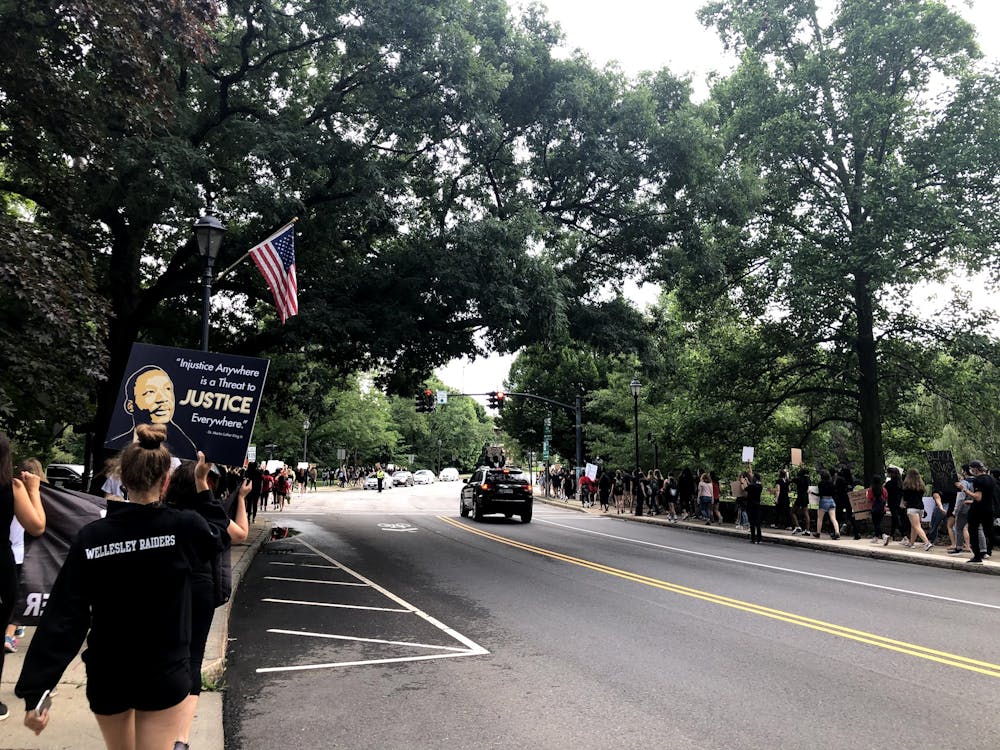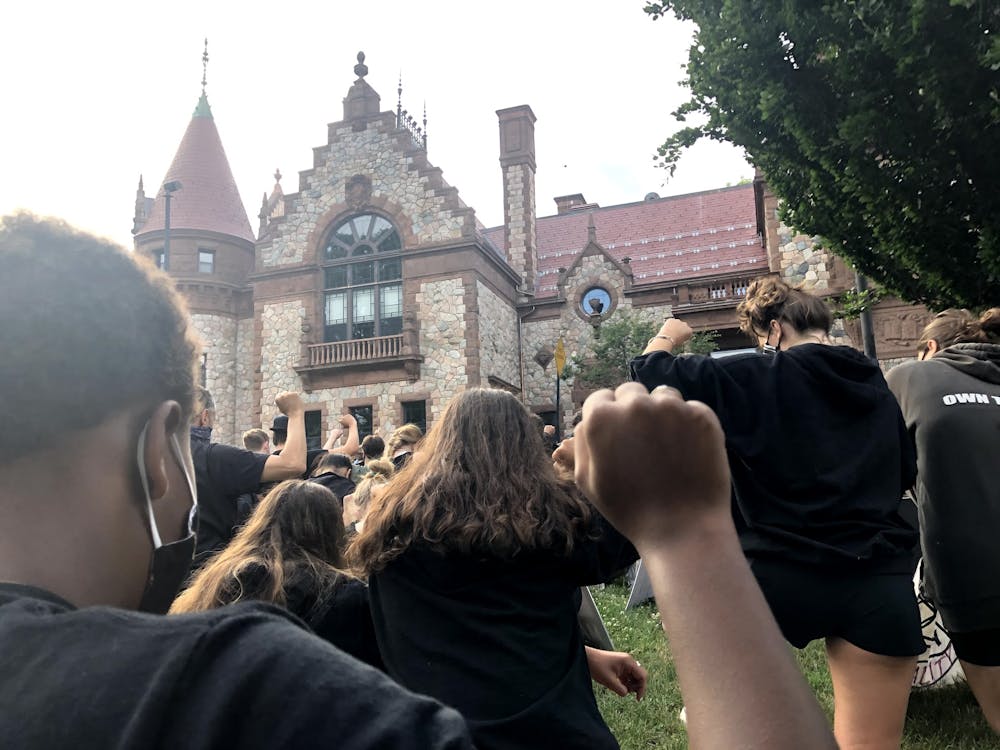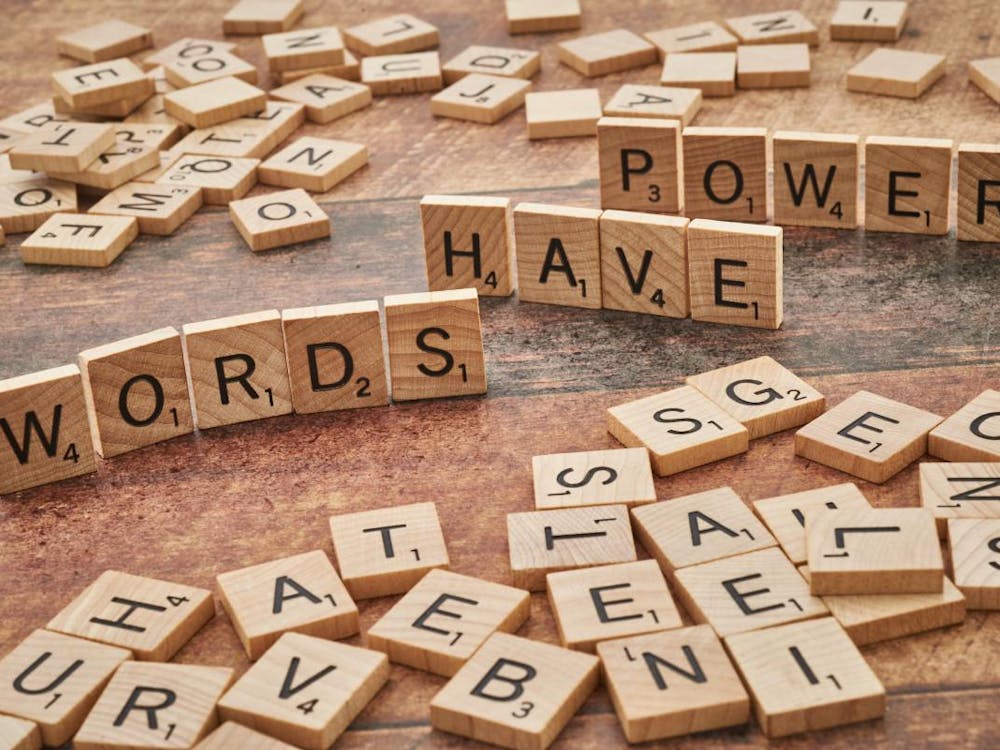Eight minutes and 46 seconds is a very long time. I realized just how long it is while at a protest in my hometown on June 29. After walking two miles through the center of Wellesley, Mass., and arriving at the town hall, all 400 demonstrators took a knee and raised our fists for an eight minute, 46 second moment of silence.
You notice a lot in eight minutes and 46 seconds. You don’t want to think, but you can’t help it; it’s too long to sit with an empty mind. So you take in the scene around you. The ant climbing on a blade of grass by your foot. The few remaining droplets from the morning’s rain. The sun peeking through the clouds. The fragments of signs poking out around the bodies of the people in front of you. The wind rippling your shirt.
You feel the ground under your knee, slowly turning it sore. You feel the strain in your thigh as the minutes tick by. You see the people around you in similar discomfort, their bodies shifting their weight. Your shoulder supporting your raised fist grows tired. The angle between your arm and the ground decreases.
Sitting in that position, you can’t help but wonder why you are doing so. Kneeling, the sign of respect adopted by Colin Kaepernick four years ago to protest police brutality before it was popular. Kneeling, the tactic Derek Chauvin used to slowly, painfully, take away George Floyd’s life. And so in this eight minute and 46 second kneel of silence, which at first seems to be a gesture of solidarity with Floyd and so many others, I can’t help but put myself in Chauvin’s shoes. Is that what this is for?
What struck me as I knelt was the effort it takes to stay in that position, and the nonchalance evident in Chauvin’s demeanor, hands in his pockets as he pressed the life out of the human being beneath him. It looked effortless, but it wasn’t. It was a deliberate, conscious choice to keep kneeling for those 8 minutes and 46 seconds. His leg may have gotten tired, his mind may have wandered. He heard the pleas of George Floyd, the desperate calls from bystanders. But still he knelt.
Chauvin’s crime was slowed down, excruciatingly so, but the underlying sentiment was no different than the police officers who shoot Black people, seemingly in split-second decisions. It is impunity, power without accountability, that gives them the freedom to murder.
What kind of person can willfully crush the life out of another person? What kind of system recruits, supports, and promotes such a person? What kind of system allows that person to train new officers, increasing his power, treating him as an exemplar? That’s what we’re fighting against.
And who is that “we?” As I looked out at the hundreds of kneeling people around me, I realized that the kneel also forced my white peers to reflect, to consider their role in this system. Over the past few weeks, their reflection compelled them to act. I think that is what makes this moment unique.
White Americans have participated in these protests more than previous uprisings in response to police violence. In big cities and small towns across the nation, this movement has grown into perhaps the largest in U.S. history. Wellesley exemplifies this change.
The town is just three percent Black; with its voluntary busing program with Boston, METCO, the public schools are four percent Black. Redlining, discrimination, and generational wealth gaps have conspired to create an affluent, predominantly white suburb that appears to represent the pinnacle of the American Dream — but only for some. Langston Hughes once asked, “what happens to a dream deferred?” At this moment, in Wellesley and across America, we are seeing it “explode.”
Testimonies of the Black students who live and go to school here reveal the truth of the community. The Instagram page Black@Wellesley contains countless experiences of discrimination and racism that Black students have faced. Finally, white residents are paying attention.


Julia Chaffers / The Daily Princetonian
The protest, about three to four hundred strong, was predominantly white. The organizers, who were students and recent alumni of Wellesley High School, were predominantly people of color. At the town hall, the organizers shared their painful experiences and told the community their demands of the school system: more diverse faculty and staff, an anti-racist curriculum starting in kindergarten, and removing the Wellesley Police from schools, among other things. In other words: see us, hear us, listen to us.
And perhaps Wellesley is ready to listen. As we made our way down the sidewalks along the busy main street of town — the same route as our town parades, the same route I took to school everyday, the same road you have to take to get anywhere, really, in this town — drivers honked and waved. Kids at a tennis camp stopped their play and watched us walk past. Parents playing with children on the playground stopped and clapped.
The most remarkable thing about the protest was that it was youth-led. I saw old classmates, younger students, and elementary schoolers marching, waving signs, and shouting. Kids claiming the attention of the town. They’re not too young to care; they care because they’re young, because they want to grow up in a better world. For the first time in my life, I really felt that change is coming to Wellesley as the shouts rang out: “Black Lives Matter!”








